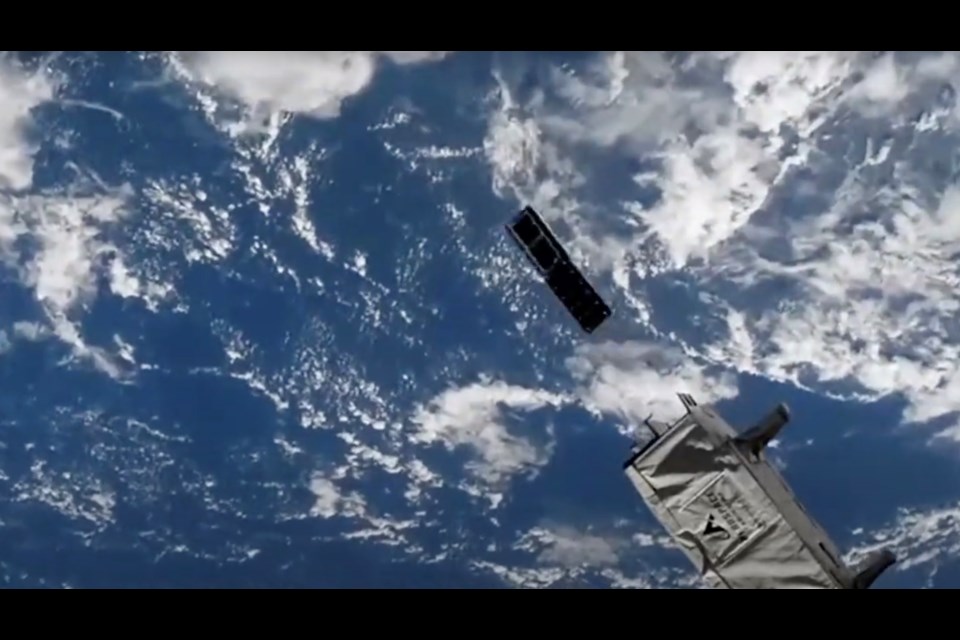The last phase of the journey of a satellite — a trip that started at the University of Victoria — took place Thursday as it was deployed into orbit from the International Space Station.
“You could feel the excitement at today’s deployment,” said Tony Pellerin, Canadian Space Agency manager, space science and technology. “There was a rush to get in touch with the satellite and another wave of excitement when that was successful.”
The satellite, which is about the size of a two-litre milk carton, represents four years of work by dozens of full-time researchers, co-op and volunteer students from UVic Satellite Design, UBC Orbit and Simon Fraser University Satellite Design.
The satellite — called ORCASat, short for Optical Reference Calibration Satellite (and a not-too subtle nod to the region of Canada it was made in) — is intended to serve as a reference light source in orbit that can be viewed by telescopes on Earth.
Using two laser light sources, the satellite measures the amount of light that an astronomical object is emitting. This allows ground-based telescopes to be calibrated to measure the absolute brightness of an astronomical object, not how they appear after passing through the atmosphere and the optics of a telescope.
It is the first satellite to carry a light source capable of performing the experiment to this level of accuracy.
“It is certainly not easy to make a satellite and the No. 1 goal of Canadian CubeSat Project, which started in 2017, was to train students,” said Pellerin. “In that sense, the mission was successful even before it deployed today.”
The space agency selected 15 universities, with grants of up to $250,000, to fund the CubeSat Project nationwide. Following Thursday’s success, similar launches are expected in March and June.
The goal of the project is to give post-secondary institutions a chance to involve students in a space mission, with experts guiding them.
“There is an opportunity for every university in the country to get involved.”
The satellite has been placed in a 400-kilometre orbit around Earth (called a low orbit), travelling at 7.5 kilometres a second.
As the orbits decay, it will get closer and closer and is expected to de-orbit in about a year “if we are lucky”, burning up in the atmosphere and leaving no debris.
>>> To comment on this article, write a letter to the editor: [email protected]



